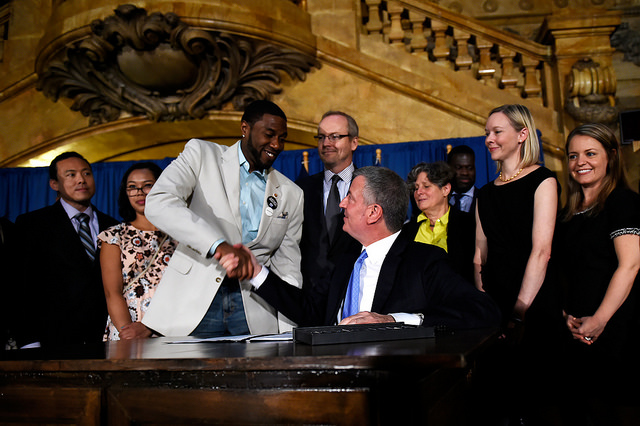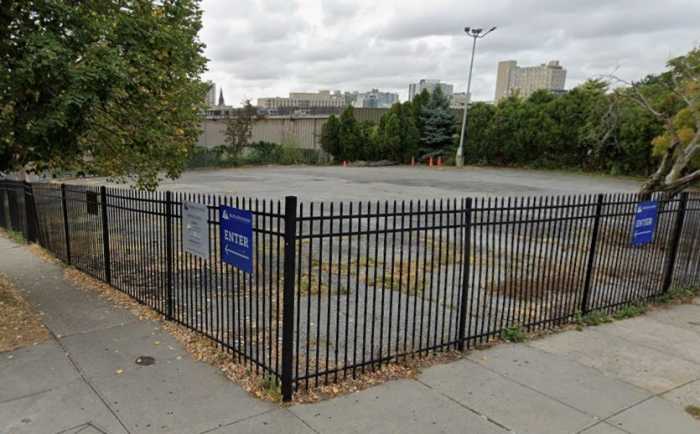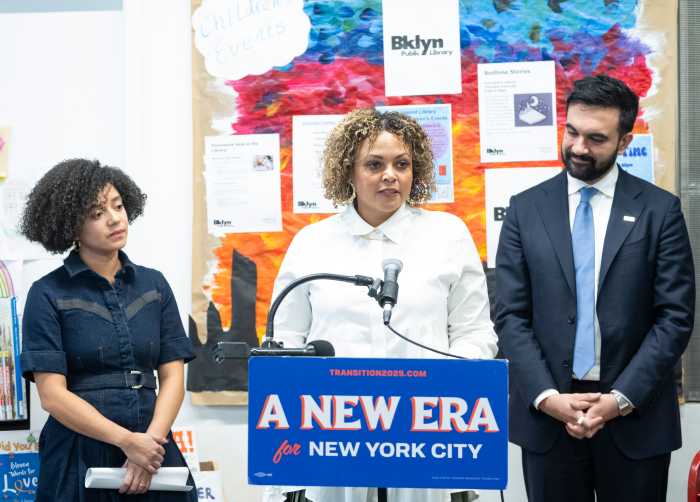The package of bills signed into law yesterday that City Councilman Jumaane Williams (Flatbush, East Flatbush, Midwood) championed putting more stringent oversight over the NYPD is adding fuel to the flames of the already acrimonious relationship between the de Blasio Administration and the police rank-and-file.
The thee bills includes Intro. 606, which requires the NYPD to issue quarterly reports on use of force incidents and their relationship to quality of life offenses. Williams introduced after the death of Eric Garner, who dies 2014 after a Staten Island police officer placed him in a chokehold, while arresting him for selling cigarettes.

“I wanted more information from the police department on the use of force when it comes to offenses such as those alleged to have been committed by Mr. Garner,” said Williams. “This bill will shed light on the basis for police officers approaching, or engaging in a police interaction with a New Yorker.”
Piggybacking on the measure is Intros. 539 and 824. Intro. 539, sponsored by Queens City Member Rory Lancman, requires the NYPD to provide the aforementioned quarterly reports disaggregated by the type of force used, the precinct or unit of the officer that used force and whether the officer was on or off duty when the force was used.
Additionally, the measure requires the NYPD to report on the number of injuries to an officer or civilian resulting from a police and civilian interaction involving a use of force incident, and the severity of those injuries.The NYPD also must provide an annual report on the uses of force found to be excessive by the department.
Intro. 824 , sponsored by Staten Island City Council Member Deborah Rose, requires the NYPD to post an annual report of the total number and percentage of officers in each precinct that have two or more substantiated Civilian Complaint Review Board complaints in the last 3 calendar years, have been the subject of an Internal Affairs Bureau investigation that resulted in a suspension in the last 5 years, have used excessive force in the last 3 years or has been arrested in the last 10 years for police-related behavior.
“When combined with legislation by Council Members Lancman and Rose, we’ll get further information on overall use of force, along with additional reporting on the location of officers, who have received the highest number of civilian complaints. We will also be able to identify officers who are frequently named in civil action lawsuits because of alleged police brutality,” said Williams.
The Patrolmen’s Benevolent Association, which represents the NYPD’s 22,000 rank-and-file officers, issued a terse “no Comment” on the mayor signing the bills, but did refer KCP to PBA President Patrick J. Lynch’s remarks during the hearing last month on the bills before they were passed.
“The Proposed Bills would exacerbate this effect by fostering the public misconception that any use of force by a police officer is unjustified and excessive. The definition of “excessive force” contained in both Intro. 539-A and the NYPD Patrol Guide specifies that the reasonableness of a particular use of force will be determined only after a careful review of the totality of the circumstances surrounding the incident. However, the reports mandated by the Proposed Bills would strip away that context and aggregate unique incidents into broad categories,” said Lynch at the hearings.
“In the PBA’s view, these reports are designed to steer the public to the pre-determined conclusion that New York City police officers use force excessively on a routine basis, and to create pressure on the NYPD’s existing oversight and disciplinary apparatuses to punish as many police officers as possible, regardless of the merits of individual cases,” he added.
But Williams maintains the bills are in place to add transparency to police and community relations, which can only improve on some tensions between the police and some of the communities in which they are charged to serve and protect.
“It is my hope that as we move toward improved police-community relations, the data gleaned from these new reports will help us understand overall use of force guidelines, including their relation to quality of life offenses, and open up opportunities to deescalate altercations where at all possible,” said Williams.






